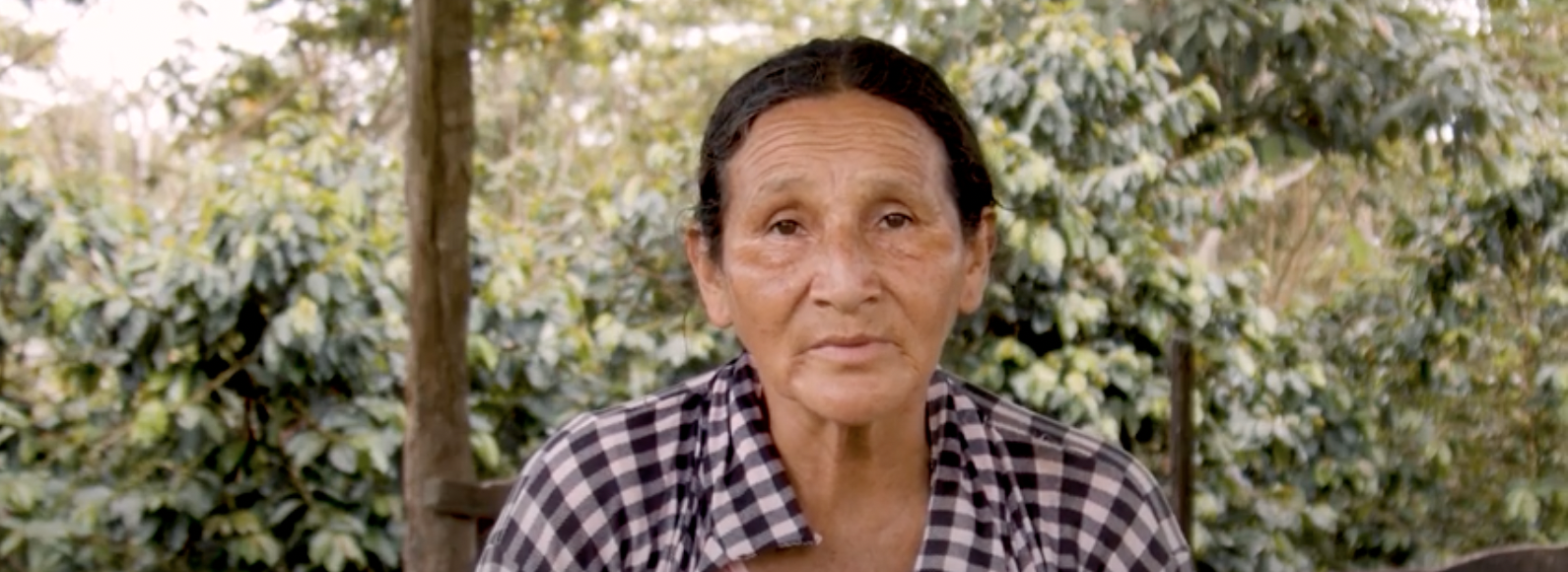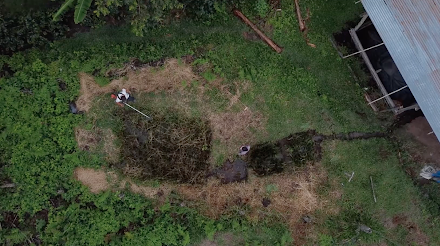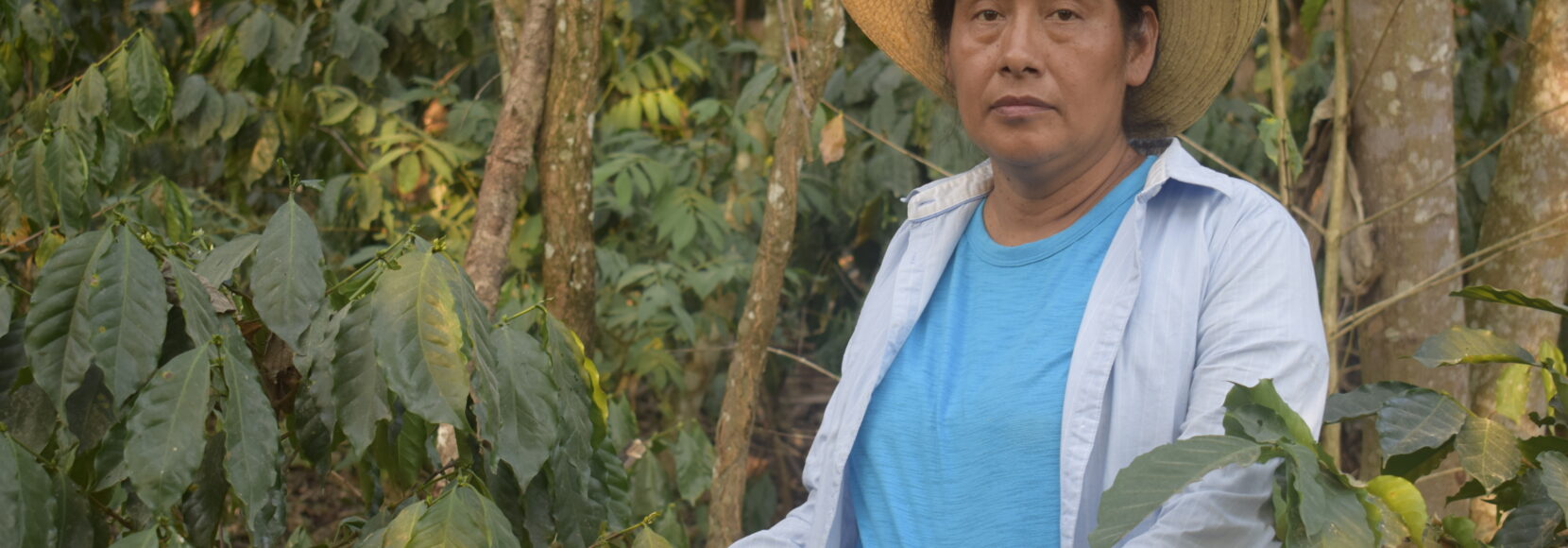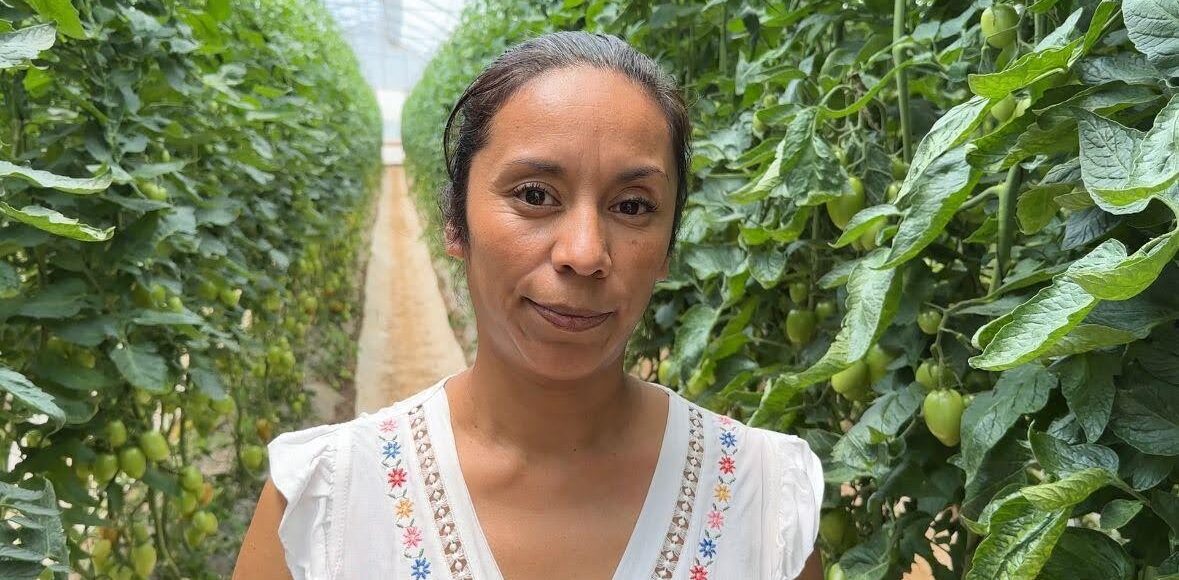
Farmers See the Benefits of Vetiver Wetlands and Regenerative Agriculture in Peru
From Ethiopia to Peru, a highly efficient, natural technology is being implemented to help wetlands recover: vetiver grass. Learn how it works in Peru – and how it helps coffee farmer Emilia Lozada send her children to school.
Processing coffee improves its quality for the consumer – and its value for smallholder farmers fighting poverty.
But in many communities, it can also harm the environment.

In Peru, where coffee is a critical source of income for more than 225,000 producers and contributes to more than 25% of the country’s agricultural income, farmers often remove the pulp from coffee with machines on their own land.
But the wastewater from that process can also contaminate the farmers’ soil – or even waterways shared by the larger community. It can also threaten many farmers’ organic certification status.
“There was a lot of contamination, many flies, and a bad smell,” remembers Emilia Lozada, 47, a longtime coffee farmer who used this method on her land in the Sugllaquiro community of San Martín, Peru.
Then came an unusual – and simple – solution.
The Important Role of Vetiver Grass
Sergio López is the TechnoServe project director for the Coffee Alliance for Excellence (CAFE) program, a public-private partnership with the U.S. Agency for International Development and Jacobs Douwe Egberts to create a more sustainable coffee sector in Peru. The project was working with 12,000 coffee farming families, including Emilia’s, to improve their production and incomes. But the pulping wastewater was becoming a significant problem.
Around that time, Sergio paid a visit to TechnoServe’s East Africa coffee programs. And what he saw there got him thinking.
In Rwanda, he saw a technique that had been pioneered in Ethiopia to address this same wastewater problem. TechnoServe staff and scientists from Ethiopia’s Jimma Agricultural Research Center (JARC) had developed a regenerative business solution that would help coffee wet mills to clean up the wastewater and prevent it reaching the rivers.
How to build a vetiver wetland
Vetiver grass – known for its resilience, deep roots, and ability to prevent soil erosion – is planted in rows on a gentle slope near the wet mills. The deep-rooted grass then absorbs most of the contaminated wastewater, with any excess flowing into a pond before it reaches the river.
TechnoServe has applied this solution for over 10 years now, working with more than 100 coffee washing stations in Ethiopia to build large scale vetiver grass wetlands and reduce water usage. Compared to other wastewater management solutions, vetiver grass is cost-effective and environmentally friendly. And so the solution expanded across TechnoServe’s coffee work.
But it wasn’t applied in Peru, where coffee processing was often done on individual farms, not at the large wet mills common to East Africa.
Sergio became determined to change that.
Adapting the Wastewater Approach in Peru
“In 2018, I visited Rwanda to learn more about the coffee project that TechnoServe was implementing, how they were developing the Coffee Farm College [TechnoServe’s coffee farmer training program], and the environmental measures they were promoting,” Sergio reflects. “We visited a wet mill assisted by the project where they showed us their coffee processing center and how they treated wastewater using vetiver. It was new for us, but seeing how easy it was to implement and how effective it was to treat these waters, we decided to replicate it in Peru.”
But they faced two challenges:
First, the Peru team had to find vetiver grass, which is not all that common in Peru. Eventually, they found a supplier from Villa Rica – the central jungle – that used vetiver grass to control erosion in road construction.
Second, they had to convince the producers to implement it on their farms. The technical team set to work. Applying the lessons from East Africa, the team trained farmers in how to construct small vetiver grass wetlands measuring 12 square meters (129 square feet). The program even produced a radio ad to run during the pandemic, reminding farmers about the importance of treating wastewater.
“The wetlands with vetiver are cheap to implement, and very simple to work,” says Patricia Tello, Environmental Coordinator for TechnoServe. “They are pretty efficient for treating coffee wastewater.”
So far, the program has successfully helped establish 215 wetlands in Peru that have supported farmers in solving this major wastewater challenge.
The program’s farmer trainers also explain how to turn coffee pulp into compost, and how this process can save farmers money: 500 kilograms of compost costs $77 to purchase in the market, plus the cost of transporting it to the farm, while it costs just $13 to produce the same amount of compost on the farm using coffee pulp.
Emilia Lozada immediately appreciated the new approach. “There is no contamination, and everything is clean,” she says while examining her coffee compost. “It’s not like before when I washed the coffee, and the wastewater was thrown on the ground.”
Sustaining her coffee production is critical to Emilia, who relies on her coffee income to send her children to school. So Emilia now composts the pulped coffee – without contaminating her farm, thanks to the vetiver solution — and uses it to fertilize her coffee plants, the vetiver wetlands, and a nearby vegetable garden.
Through this process, Emilia is able to not only reduce her waste and save money, but also produce better coffee that fetches higher prices. This year, she harvested 60 sacks of coffee, which she sold for $172 per sac, receiving $10,320 for all her coffee.
This income allowed her to buy food and invest in education for her family.
The Push for Regenerative Agriculture
The vetiver wetlands are one example of TechnoServe’s approach to regenerative business: a commercial activity that rejuvenates, rather than degrades, nature so that people and markets can prosper in the long term.

Around the world, important streams, creeks, and rivers run through the world’s coffeelands, providing water for cooking, cleaning, irrigation, animals, and coffee processing. The commercial value of these waterways is high for rural communities. And these waterways need to not only be protected, but to rejuvenate the local ecosystem for long-term sustainability.
While the vetiver grass solution is being implemented in several communities around the world, its potential use as a natural regenerative technology is extremely high. For the TechnoServe team in Peru, there are dozens more communities that would benefit from the use of vetiver grass.
And not just for coffee. Vetiver grass is being tested for its potential to treat wastewater from the dairy sector, which often produces large amounts of waste. In Peru, this could help other smallholder farmers reduce waste in their communities, too.
Having helped bring this “cheap and straightforward way to decontaminate the coffee wastewater” to Peru, Sergio López – among many others – is excited for what’s ahead.





